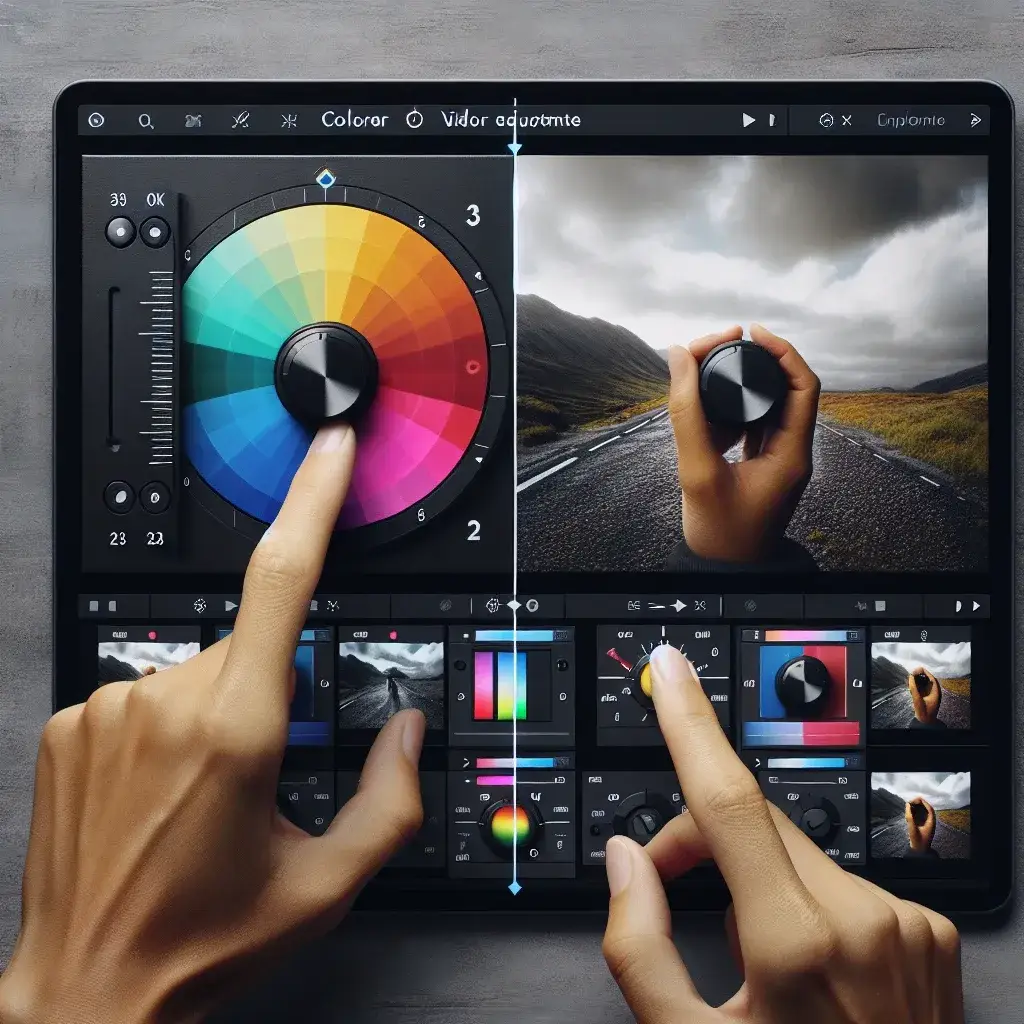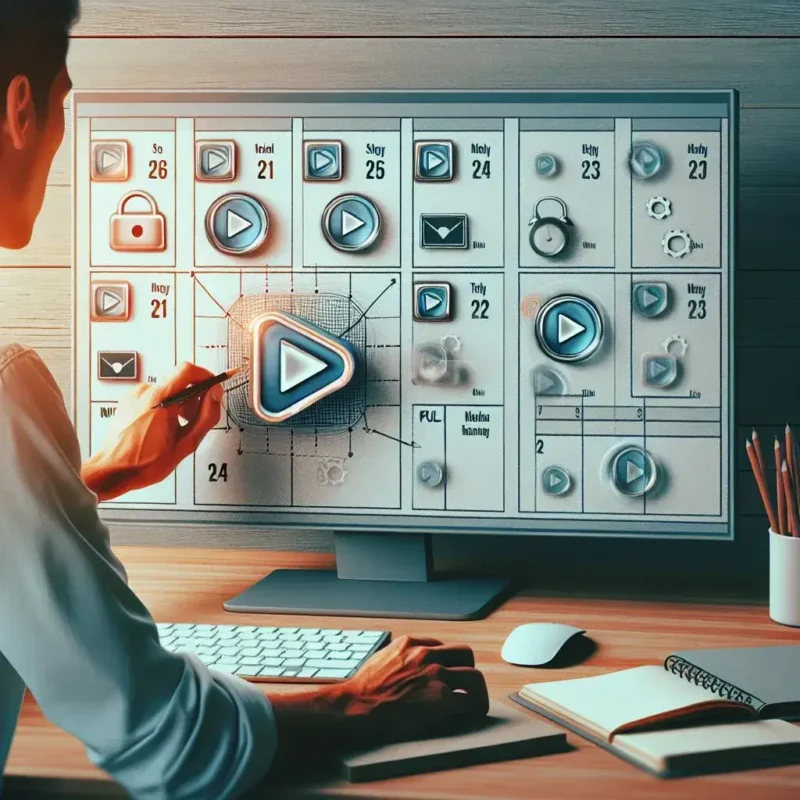Understanding Color Temperature Fundamentals
Color temperature represents one of the most crucial aspects of digital image and video editing, fundamentally affecting how viewers perceive your visual content. Measured in Kelvin (K), color temperature ranges from warm orange-red tones at lower values to cool blue tones at higher values. Professional editors understand that mastering color temperature adjustments can transform ordinary footage into cinematic masterpieces.
The human eye naturally adapts to different lighting conditions throughout the day, but cameras capture exactly what they see without this automatic adjustment. This creates the need for post-production color temperature correction to achieve natural-looking results that match our visual expectations.
The Science Behind Color Temperature Values
Different light sources emit varying color temperatures, creating distinct visual atmospheres. Candlelight typically measures around 1,900K, producing warm, intimate feelings. Tungsten bulbs operate at approximately 3,200K, while daylight averages 5,600K. Overcast skies can reach 7,000K or higher, casting cool blue tones across scenes.
Understanding these baseline values enables editors to make informed decisions when adjusting footage shot under mixed lighting conditions. Professional colorists often reference these standards when establishing the mood and atmosphere for different scenes within a project.
Essential Tools for Color Temperature Adjustment
Modern editing software provides multiple approaches for color temperature manipulation. Adobe Premiere Pro offers the Lumetri Color panel with intuitive temperature sliders. DaVinci Resolve features comprehensive color wheels and curves for precise control. Final Cut Pro includes built-in color correction tools specifically designed for temperature adjustments.
Each platform presents unique advantages: Premiere Pro excels in workflow integration, DaVinci Resolve offers professional-grade color science, and Final Cut Pro provides streamlined controls for rapid editing. Selecting the appropriate tool depends on project requirements, budget constraints, and personal preferences.
Step-by-Step Color Temperature Correction Process
Initial Assessment and White Balance
Begin every color temperature adjustment by analyzing the existing footage characteristics. Identify the primary light source and determine whether the current white balance accurately represents the intended mood. Look for color casts that appear unnatural or distracting to viewers.
Establish a neutral reference point using white or gray objects within the frame. These elements should appear colorless after proper temperature adjustment, serving as benchmarks for accurate color reproduction throughout the editing process.
Using Temperature Sliders Effectively
Most editing applications feature temperature sliders that move between orange and blue extremes. Moving the slider toward orange (lower Kelvin values) warms the image, while shifting toward blue (higher Kelvin values) cools the footage. Make subtle adjustments initially, as dramatic changes can appear artificial.
Professional editors recommend making temperature adjustments in increments of 100-200K to maintain natural-looking results. Extreme adjustments exceeding 1,000K from the original setting often require additional color grading to maintain image quality.
Advanced Techniques for Complex Scenarios
Mixed lighting situations require sophisticated approaches beyond basic temperature sliders. Use color wheels to target specific tonal ranges: shadows, midtones, and highlights. This selective approach allows precise control over different areas of the image without affecting the entire frame uniformly.
Masking tools enable localized color temperature adjustments, particularly useful when different areas of the frame require distinct treatments. For example, warming interior lighting while maintaining cool exterior daylight creates realistic mixed-lighting scenarios.
Creative Applications and Artistic Considerations
Establishing Mood Through Temperature
Color temperature serves as a powerful storytelling tool beyond technical correction. Warm temperatures (2,500K-4,000K) evoke feelings of comfort, intimacy, and nostalgia. Cool temperatures (5,500K-8,000K) suggest modernity, tension, or clinical environments. Strategic temperature choices guide audience emotional responses throughout narrative arcs.
Cinematographers often employ color temperature progression to support story development. Beginning scenes with neutral temperatures and gradually shifting warmer or cooler creates subtle psychological impacts that enhance viewer engagement without conscious awareness.
Genre-Specific Temperature Approaches
Different content genres benefit from specific temperature treatments. Corporate videos typically favor neutral to slightly cool temperatures (5,000K-6,500K) conveying professionalism and trustworthiness. Romance films often utilize warm temperatures (3,000K-4,500K) creating intimate atmospheres. Thriller genres frequently employ cool temperatures (6,000K-8,000K) building tension and unease.
Understanding these conventions helps editors make appropriate choices while maintaining creative flexibility for unique artistic visions.
Common Mistakes and Professional Solutions
Avoiding Overcorrection
Beginning editors frequently overcorrect color temperature, creating unnatural-looking footage that draws attention away from content. Subtle adjustments often prove more effective than dramatic changes. Professional colorists recommend comparing adjusted footage with original material to ensure improvements rather than distractions.
Skin tone preservation remains critical during temperature adjustments. Human skin contains complex color information that can appear sickly or artificial when temperature corrections are too aggressive. Monitor skin tones carefully and use secondary corrections when necessary.
Technical Considerations and Limitations
Extreme color temperature adjustments can introduce noise and artifacts into footage, particularly in compressed formats. RAW or high-bitrate recordings provide greater flexibility for temperature manipulation without quality degradation. Consider source material limitations when planning correction strategies.
Different camera sensors respond uniquely to color temperature adjustments. Some manufacturers emphasize warm color science, while others prioritize neutral reproduction. Understanding camera characteristics helps predict how footage will respond to temperature modifications.
Advanced Color Grading Integration
Combining Temperature with Other Corrections
Professional color grading involves multiple adjustment layers working harmoniously. Temperature corrections often require complementary tint adjustments to eliminate green or magenta color casts. Saturation modifications may be necessary to maintain vibrant colors after temperature changes.
Contrast and exposure adjustments frequently accompany temperature corrections, as color perception changes with luminance levels. Coordinating these elements creates cohesive, professional-looking results that appear natural to viewers.
Workflow Optimization Strategies
Efficient color temperature workflows save time while maintaining quality standards. Establish adjustment presets for common lighting scenarios: daylight, tungsten, fluorescent, and mixed conditions. These starting points accelerate the correction process while providing consistent results across projects.
Create reference monitors displaying corrected footage alongside original material. This comparison method helps maintain perspective during extended editing sessions when color perception can shift due to eye fatigue.
Quality Control and Final Review
Monitor Calibration Importance
Accurate color temperature adjustments require properly calibrated monitoring equipment. Uncalibrated displays can mislead editors, resulting in corrections that appear incorrect on other viewing devices. Professional colorists invest in reference monitors and regular calibration services to ensure accuracy.
Consider viewing environment lighting when making temperature adjustments. Room lighting affects color perception, potentially causing inappropriate corrections. Many professionals work in controlled lighting environments with D65 illumination matching broadcast standards.
Cross-Platform Compatibility Testing
Modern content appears across multiple devices with varying display characteristics. Test color temperature adjustments on different screens: computer monitors, tablets, smartphones, and televisions. This verification process ensures consistent appearance regardless of viewing platform.
Export test clips in various formats and compression levels to identify potential issues before final delivery. Some compression algorithms can shift color temperature slightly, requiring anticipatory adjustments during the editing process.
Future Trends and Emerging Technologies
Artificial intelligence integration is revolutionizing color temperature adjustment workflows. Machine learning algorithms can analyze footage and suggest appropriate temperature corrections based on scene content and lighting conditions. These tools accelerate the editing process while maintaining professional quality standards.
HDR (High Dynamic Range) content creation requires enhanced color temperature precision due to expanded color gamuts and luminance ranges. Editors must adapt traditional techniques to accommodate these advanced display technologies while maintaining backward compatibility with standard displays.
Virtual reality and 360-degree content present unique color temperature challenges, as viewers can examine every angle of the environment. Consistent temperature treatment across the entire spherical image becomes crucial for maintaining immersion and preventing motion sickness.
Practical Tips for Immediate Implementation
Start each project by shooting color charts under the same lighting conditions as your main footage. These references provide accurate starting points for temperature corrections and ensure consistency across multiple camera angles or shooting days.
Develop a systematic approach to color temperature adjustment: assess, correct white balance, fine-tune for mood, and verify on multiple displays. This methodical process ensures thorough coverage while maintaining efficiency during tight production schedules.
Practice color temperature adjustments on diverse footage types to develop intuitive understanding of how different scenarios respond to corrections. Experience with various lighting conditions, camera systems, and content genres builds confidence and speeds decision-making during professional projects.
Remember that color temperature adjustment represents just one component of comprehensive color grading. Master these fundamentals before progressing to advanced techniques like selective color manipulation and complex secondary corrections that build upon temperature foundations.



